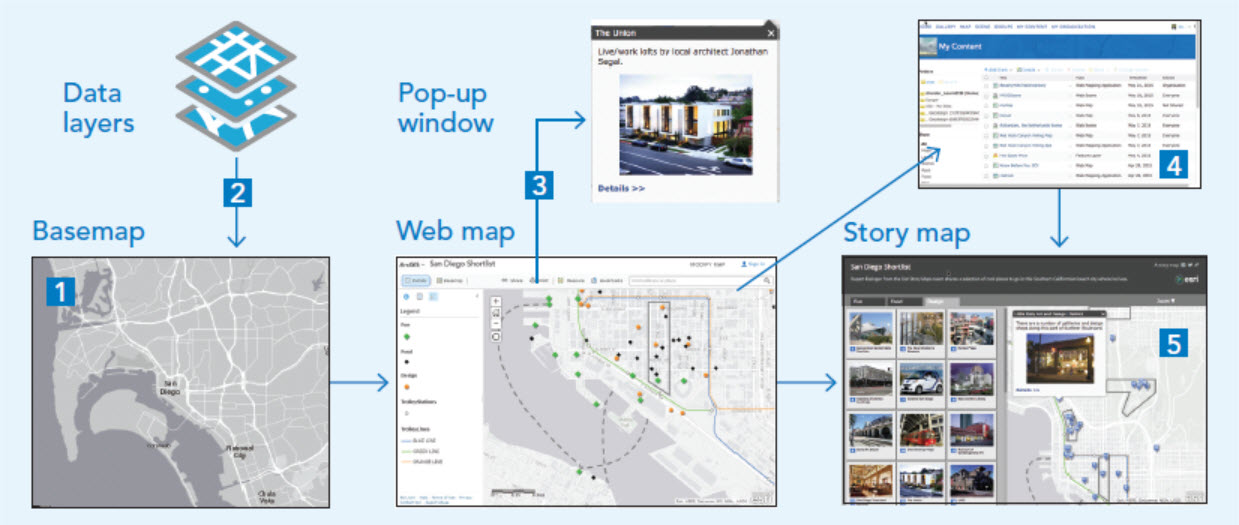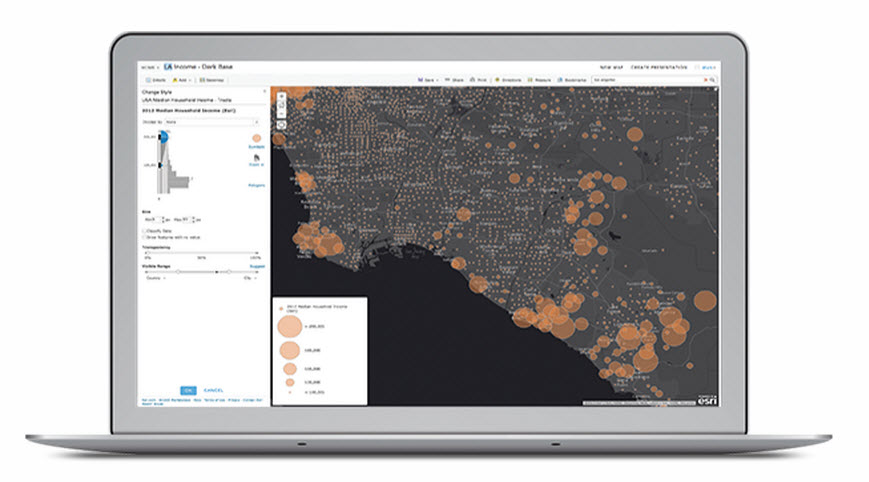Socializing your map is the core concept of Chapter 2 of The ArcGIS Book
Chapter 2 in The ArcGIS Book zeroes in on the evolution of the traditional map into the new paradigm of web mapping. When confined to the printed format, maps used to be limited in distribution. Web mapping tremendously explodes their reach. No longer confined, maps can be shared anywhere. And wherever a map is shared—to desktops, on the web, or on mobile devices—it adapts to the medium to deliver relevant information.
Web maps are now the primary user experience for exploring locations, accessing information, discovering new relationships, performing analysis, and sharing findings.
In this chapter, you will learn how to make and share a web map in five easy steps.

Naturally, cartography is covered as part of this topic. With the recent introduction of smart mapping in ArcGIS, map authors have the confidence and ability to quickly make maps that are visually pleasing and effective. Smart mapping takes the guesswork out of all the settings and choices and produces a map driven by the nature of the data, the kind of map you want to create, and the story you want to tell. Of course, as the map author you have ultimate control over the finished map.

The featured thought leader in this chapter is Jim Herries, an Esri subject matter expert on smart mapping. Jim believes that map design is about drawing your audience into the story you’re telling, and he shares a video on how to make your map great.
The Quickstart in chapter 2 includes a smart mapping video demo and helps you learn current mapping techniques using curated selections of exemplary cartography at the Maps We Love website.
With the Learn ArcGIS lesson in this chapter, you will do a complete desktop analysis and mapping project centered in the Amazon rainforest. In this project, you will use ArcMap to predict how much deforestation was prevented by prohibiting a proposed road. This lesson will help you build skills in the following areas:
- Adding data to a map
- Analyzing relationships between data
- Digitizing features
- Symbolizing and organizing data
Ready to get started with chapter 2? Let’s go!
Commenting is not enabled for this article.